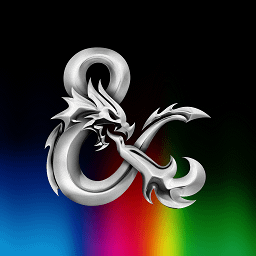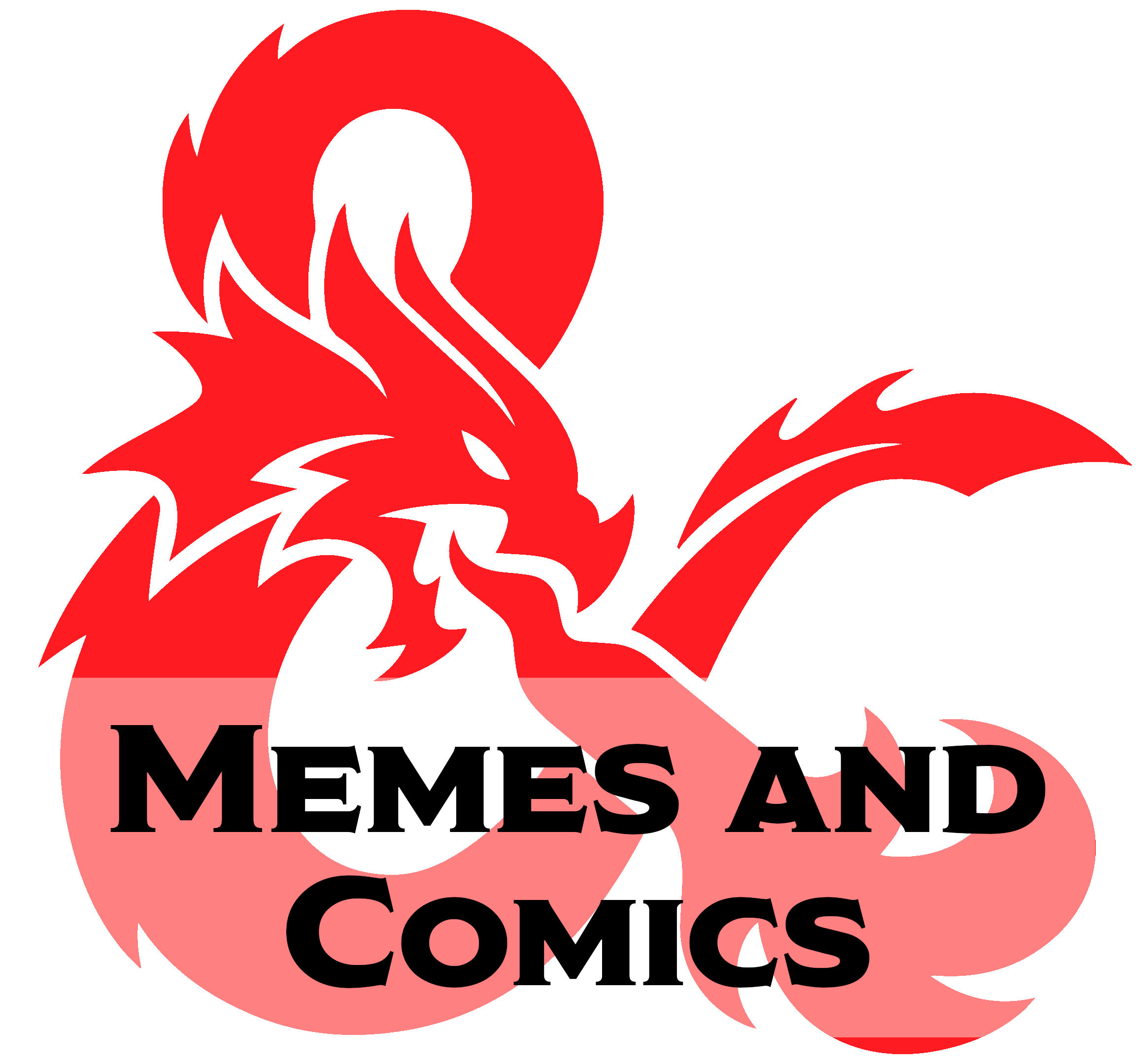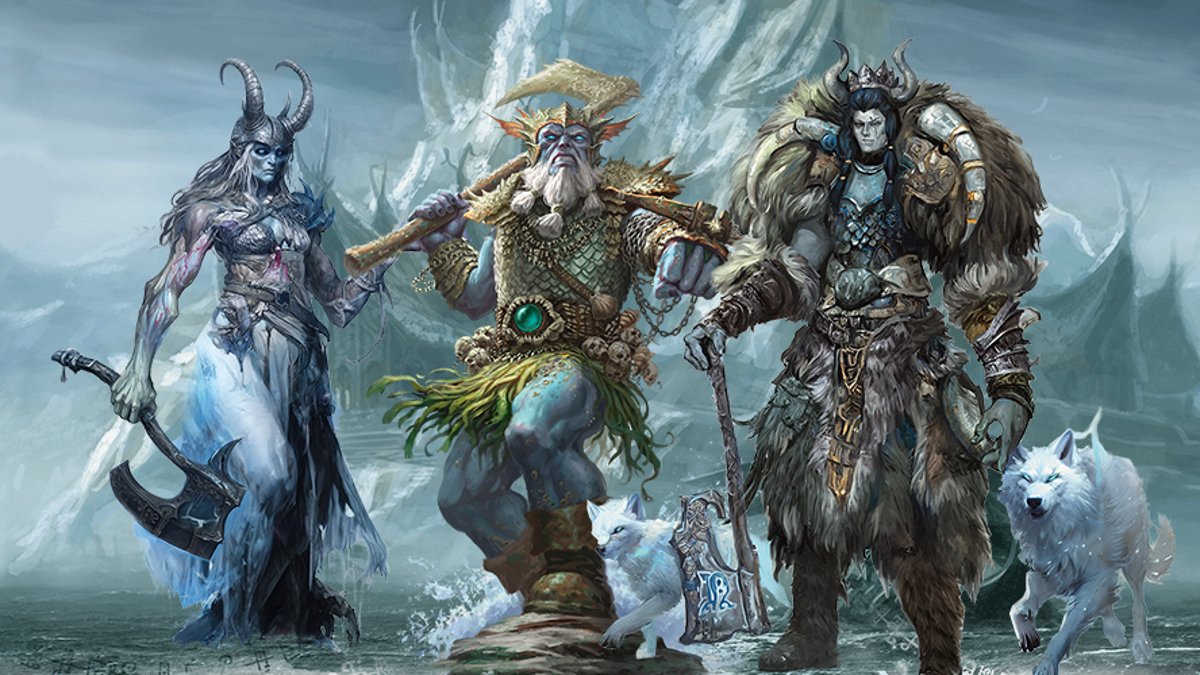- 29 Posts
- 71 Comments

 13·1 year ago
13·1 year ago“Child pure of heart and innocent of mind. You have caught my attentions, a Unicorn who wants nothing but to live and peace, and to see the joy and love of the innocent as yourself. For your purity of spirit, I shall grant a boon of this magic gun.”
The secret is to not work from what you’d like to do, but to work backwards from what your players want to do.
Seriously, throw out all the prep you have that isn’t landing, and just ask your players what kinds of things they want to do. Then, make stories inspired by the actions or accomplishments they want to undertake.
… This does require that your players have some idea of what they want to do, though. If you have checked out or uninvested players, there’s essentially nothing you can do I’m afraid.
So now I will soapbox to the players reading this: Your job is to be invested in the game. If you don’t put energy into being invested, you’re not fulfilling your side of the arrangement at the table.

 3·1 year ago
3·1 year agoI had taken the artist’s statement that the art is being reworked as evidence of the art being pulled, and at least future published books not containing them.
https://twitter.com/i_shkipin/status/1687829743268442112
I should have waited until the actual statement (linked below), as it’s clear that the artist was making something of a lie of omission above, as I believe he purposefully wanted readers to believe that the art was changing in the books, not that he would redo the art to… essentially no promised effect. Maybe he was lying to himself with the hope that he could get another go at?
https://twitter.com/DnDBeyond/status/1687969469170094083
I’ve updated the title of this post to reflect the info from the official WotC statement on the issue. I’m glad they won’t be allowing AI “augmented” submissions from their artists going forward, but I would only be truly happy with a statement that they will be taking the massive inconvenience of making sure that the art is revised for future publications at a minimum (I think a recall would be asking a lot tbh).

 1·1 year ago
1·1 year agoI don’t think you picked up that I playtested both, though.
The monks played okay, if rather awkward in my playtests of the rules. They should do more damage, but they were all suitably impactful in a fashion that this dance bard cannot replicate with the ribbon features it has been given.
The bard was just a bard with what is effectively a free melee attack cantrip that doesn’t scale with their casting stat. They do not step on the monk’s toes, because they were too busy casting shatter, fireball, and other uses of their magic action.
It’s flavorful and fun, but the impact of the dance bard is not on their level 3 features. It’s their level 6 features that give the class a tonne of impact.

 1·1 year ago
1·1 year agoBecause I have playtested monks, and their ability to control and knock enemies around while punching more often and for more damage while being quicker than the dance bard.
The dance bard in my playtest was awkward, and did less single target damage than the monks in my other playtest. It also was not able to attack and disengage for free, giving it much less of a skirmishing feeling.
A bard without any subclass features is a strong and versatile character. With the dance bard subclass, the bard is actually playing suboptimally, and does not outperform the monk in my playtest.

 1·1 year ago
1·1 year agoAll I’m really hearing here is that casters are overtuned, and monks don’t have a well defined niche.
I agree with both. The Dance Bard is the least of their issue. Most of all because the Dance Bard would be LESS effective than another, more caster focused Bard.

 1·1 year ago
1·1 year agoIMO it really, truly does not invalidate the Monk.
- Their unarmed strike isn’t any better than Shocking Grasp.
- Their AC is better with Medium Armor Proficiency and a shield.
If they got multiple attacks per turn, and a way to use them while also weaving in and out of enemy reach range without catching attacks of opportunities, then they would invalidate the monk.

 2·1 year ago
2·1 year agoThat’s a fne thought, I was just wondering if there was a way to explicitly link hunter’s mark to the other various spells that improves how they should interact.
I could even see something like being able to move your hunter’s mark to a target you hit with any of the other strike/arrow/shot spells.

 1·1 year ago
1·1 year agoI think the changes to the Paladin smites do present a neat way to change hunter’s mark for the better, as there are a tremendous number of other attack-rider spells that should be able to be looped in to the typical ranger round, in addition to hunter’s mark.
In my own playtest with the ranger, I was absolutely floored with how much damage it can do, so I hesitate to make damage output even easier. It’s not a bad idea to have rangers be the absolute Kings of ranged damage, but only if we’re okay with them having a strictly ranged damage dealer class identity.
However to your point, I think making each attack-rider spell into some permutation of hunter’s mark is the way to go. Perhaps hunter’s mark should be something that is automatically applied if you use any of the primal shots, but only for rangers (or maybe a particular ranger subclass)?

 1·1 year ago
1·1 year agoHunter’s Mark damage scales every other spell level, so it goes to 2d6 at level 9 if you use your highest spell slot at the time. No point in casting at 2nd level at all.
Ah whoops I goofed on the scaling of hunter’s mark! In my defense I was juggling a lot of new mechanics and the ranger was a last minute addition to one of my playtests.
But looking at the general numbers, one fewer d6 per turn would have been a drop in the bucket to the damage they were outputting. It was sincerely surprising on how impressive they were, I expected them to perform worse based on my first impressions of reading the class. Actually playtesting revealed that they are in no way nerfed.
I promise you, “Don’t group up when you fight things with breath weapons” is not a strategy unique to Rangers. That’s just something kind of busted with ranged builds in general.
That’s kind of my point, that Ranged builds having guaranteed high damage is an issue because there are so many perks, like ease of safe positioning. I think Rangers are doing great damage, and that might be a problem.

 2·1 year ago
2·1 year agoI’m honestly not as sold on the idea that resources are a balancing consideration, all told. Or at the very least they aren’t as big of a consideration as many people presume. But perhaps you’re right and rogues are fine, at the very least I don’t think rogue players will generally notice that they are doing less damage due to how clutch they can be with their cunning strikes.
As to Hunter’s Mark damage, it’s higher damage at level 5, when you miss once. Which means that the damage floor is higher in general starting at level 2 spellslots (character level 5), and the damage ceiling is lower only if you are able to make 3 attacks. At level 3 spellslots (character level 9) and onward, it’s simply the same or higher damage, excluding gimmicky action surge builds.
As to when it is useful to upcast, it’s useful in any fight that you think is serious. The biggest problem is that the rest of the spellcasting toolkit is sitting there, doing very little for the most part (standout exception is Conjure Barrage which is fantastically powerful and fun).
edit: Oh and to answer this…
If the Ranger was optimized for being fast, and the Rogue was constantly tripping the enemies, why are you surprised it was hard to hit the Ranger?
These were two different playtests, with different classes. The ranger and the rogue weren’t in the same playtest group, so this wasn’t the result of complementary kits. It’s mostly a consequence of the the enemies having only average movement speeds, and the counters being somewhat melee heavy.
But even in the encounter where I had 60 flight speed dragon wyrmlings, the situation constantly played out that this ranger was never grouped up with the rest of the party, so I couldn’t hit them in the breath attacks. This amount of safety is a bit problematic with their higher damage output, IMO.

 11·1 year ago
11·1 year agoThe amount of specificity of rules is not binary, it exists on a spectrum.
I think that the amount of specificity we’re seeing in the Playtest rules are beginning to encroach on an unsung virtue of 5e, with allowing for ‘Rulings, not Rules.’ Several times I have found that these specificities put more work on me, the GM, to sort out if a situation is clearly defined and doesn’t require my ruling, as opposed to just entirely requiring me to make a ruling in the moment.
To this end, PF2e does say this quite often. Where a situation that has many vague outcomes the rules will state ‘the GM will determine the outcome.’
It has felt like in 5e, that could be a general guideline in almost all cases without being explicitly stated. It feels like that’s being chipped away.
They shouldn’t have included the 2nd picture then. It’s the lightest of all of them.

 1·1 year ago
1·1 year agoThere is an undue expectation of high performance that many GMs feel, and admittedly my post here isn’t helping that! So I absolutely endorse your response to making sure that GMs don’t feel the need to do that much work.
In that case it would be helpful to give the players options of backgrounds to select that would be appropriate for the adventure at hand.
Cheers!

 2·1 year ago
2·1 year agoAnd this is absolutely enough for most groups tbh!
The method I described is a lot of extra work than the normal expectation, but it is work that does not go to waste due to it being built around you players and their characters. It should be used as a tool to make sure that extra efforts are less likely to be discarded.
But of course, following with slyflourish’s advice, be prepared to abandon anything the players do not engage with.

 31·1 year ago
31·1 year agoIt is railroading in the fashion that you are setting out a constructed plot ahead of time.
It is not railroading on the fact that you are not taking actions that nullify your players’ choices, which is the bad part of railroading.
And yes, this is explicitly involving the players in the writing process in a way that makes a bespoke plot they will enjoy while ensuring little of your effort goes to waste.
The way to find that middle ground by default is to do three phases to your worldbuilding and campaign prep.
edit: I wrote up so much that I decided to make it into its own post!
A tale that is perpetually dark in tone becomes tiresome very quickly. It needs to feature the occasional ray of light for contrast and to create a sense of hope. Monsters and other terrors must be offset with creatures that are kind and lovable, giving the characters even more reasons to stand against the darkness. Here are a couple of ways to add glimmers of light to a tragic tale:
- In a land as dreary as Barovia, take the time to describe the occasional scene of beauty, such as a pretty flower growing atop a grave.
- Make sure that the heroes have contact with NPCs who are honest, friendly, and helpful, such as the Martikovs in Vallaki or the Krezkovs in Krezk.
-Curse of Strahd, Introduction. Marks of Horror. 2016.

 4·1 year ago
4·1 year agoStructuring an adventure with skipping Tier 3 entirely sounds interesting, NGL. It’s not something we have seen before.















Sure, but even then it doesn’t make a lot of sense that all the different ways that Warlock patrons can present themselves, that they all are great about giving people raw damage potential as a cornerstone of their pact, regardless of how you flavor it.